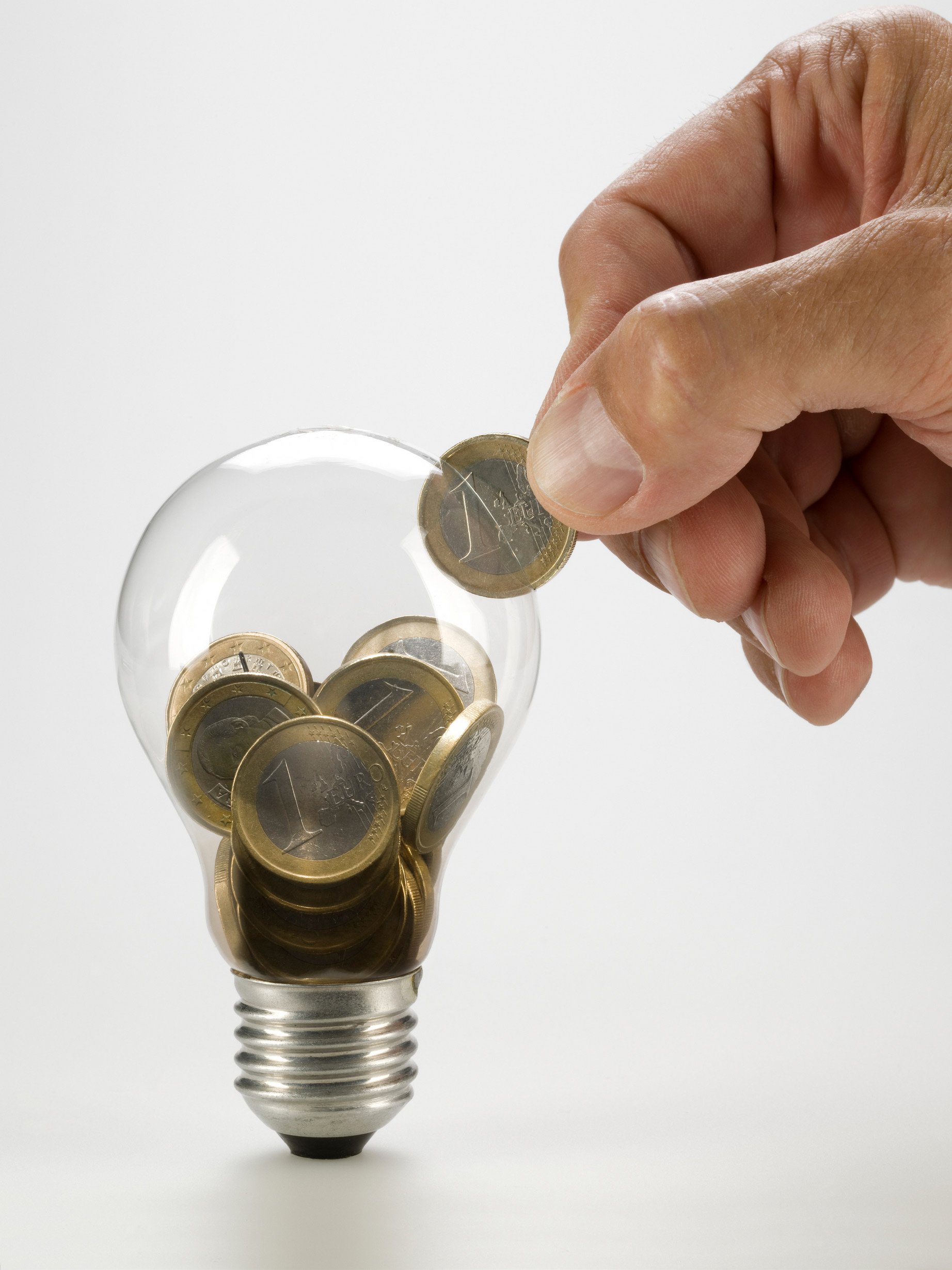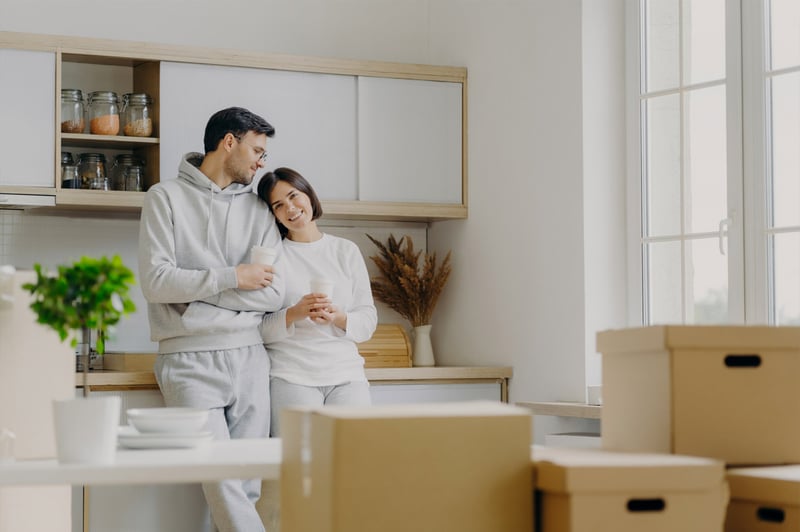THE DIY HOME ENERGY EFFICIENCY AUDIT & GUIDE
A home energy audit can save you hundreds of dollars a year.
By conducting a thorough check of your home and finding ways to reduce your energy usage, you can be sure to keep your home cool in summer and warm in winter without breaking the bank.
Tips on how to be more energy efficient in
each room of the house

ROOF
Appliances:
Attic insulation and solar panels.
Tips:
- Prevent heat escaping from the attic by insulating it approximately 12cm deep with a high R-value material, e.g. R-30.
- Clear attic vents of insulation to help with interior air circulation.
- Install solar panels on your roof to generate your own renewable energy.
.png)
Bedroom
.png)
Appliances:
Fan, heater, air conditioner, TV and DVD players.
Tips:
- Use a programmable thermostat for your heater and air conditioner to control the temperature.
- Turn off and unplug appliances and electronics when not in use.
- Use the fan more than your heater and air conditioner if possible.
- Use a heavier doona during winter to keep you warm.
Kitchen
Appliances:
Microwave, oven, stove, toaster, kettle, grill, fridge/freezer and dishwasher.
Tips:
- Use the microwave instead of the oven or stove, and the toaster instead of the grill.
- When using the kettle, only boil the amount of water required.
- Only run the dishwasher when it’s full, using the economy cycle, and let the dishes air-dry.
- Make sure the fridge and freezer doors seal properly.
- Clean the coils on the back of your fridge to help keep it running efficiently.
- Reduce cooking time by thawing frozen food in the fridge and keeping lids on pots.
.png)
Bathroom
.png)
Appliances:
Water heater, showerheads, radiator and heat pumps
Tips:
- Install an efficient water heater, like solar water heating.
- Use water-saving showerheads. Add insulation to your hot water system and use a low thermostat setting.
- Invest in renewable heating technologies like heat pumps.
- Reduce your hot water use and shower time.
- Flush the toilet less, repair any leaks, and retrofit it with a kit that conserves water.
Home office
Appliances:
Fan, heater, air conditioner, computer and
printer/scanner/fax.
Tips:
- Use a programmable thermostat for your heater and air conditioner to control the temperature.
- Turn off and unplug appliances and electronics when not in use.
- Use the fan more than your heater and air conditioner if possible.
.png)
Dining Room
.png)
Appliances:
Fan, heater and air conditioner.
Tips:
- Use a programmable thermostat for your heating and cooling systems.
- Use the fan more if possible.
 General tips on saving energy
General tips on saving energy
- Use energy-efficient appliances with low standby power.
- Unplug appliances and electronics when you’re not using them or if they’re fully charged.
- Use a standby power controller to reduce standby time and to turn off unused appliances.
- Clean and replace the filter on your furnace and air conditioner on a regular basis.
- Have a professional inspect your heating and air conditioning systems once a year to ensure they’re working properly.
- Use a programmable thermostat that can be automatically turned on or off as needed and that can also lower the temperature when you’re not at home.
- Always check for leaking faucets and fix them as soon as you can.
- Use low-flow faucet aerators.
- Use energy-efficient lighting such as LED (lightemitting diode) or CFLs (compact fluorescent lights).
- Seal air leaks around your windows, doors, floors and electrical outlets with draught-proofing products like caulk or weather stripping.
- Close doors, windows, blinds or curtains to prevent heat or hot or cold air from entering.
- Properly insulate your roof, attic, ceiling, floor and external walls.

 Energy Ratings
Energy Ratings

- A range of appliances, such as gas heaters and reverse cycle air conditioners, have Energy Rating Labels that you can use to compare the energy use (kWh per year) and efficiency of similar-sized models before choosing the most efficient one that suits your needs and budget. These labels display a star rating system where the more stars an appliance has, the more energy efficient it is.
- In Australia, the highest number of stars an appliance can have is 6 (for most energy-efficient), or 12 for an appliance that offers both cooling and heating options (6 for cooling and 6 for heating). The most efficient models are cheaper to run and produce lower greenhouse gas emissions than conventional models.
- You can visit the Energy Rating website to compare the estimated running costs of different appliances and to find the most efficient models. Using energy-efficient appliances can save you money and you’ll also be able to help the environment at the same time.
 Seasonal Adjustments
Seasonal Adjustments
How to save energy in summer and winter
- The summer and winter months usually mean increased energy usage, but there are many ways you can save energy on your heating and air conditioning.
- Use energy-efficient heating or cooling units and install them in different areas of your home to reduce their running time.
- Set your thermostat to 18-20°C in winter and 25-27°C in summer.
- Only heat or cool the rooms that you use often or when you need them.
- Use your fireplace to quickly warm up your home and close the damper when not in use to prevent heated air from escaping and cold air from entering the house. Also clean the fireplace.
- Don’t cover air vents or radiators to ensure airflow isn’t obstructed and moves freely throughout your home
- Use your ceiling fans in summer to cool the place and run them in reverse in winter to bring the warm air down.
- In winter, open your curtains or blinds during the day to let natural light in to warm up your home, and close them at night to keep the chill out. In summer, do the opposite.
- Also in winter, install area rugs in a room to add extra insulation to the floor, which traps the cool air underneath. Area rugs will also keep your feet warm.
- Turn off your heating unit at night and use a heavy blanket. If it’s hot, turn off your cooling unit and use a fan instead.
- Don’t leave your heater and air conditioner on when you’re not at home. If you wish, you can have them turn on 15 minutes before you return.
- Use space heaters instead of a central heating system to heat up individual rooms quickly and cheaply.
- Put a cover on your air conditioning unit to keep the warm air inside during winter. If you have a window unit, remove it from and close the window.
- Wear fewer clothes in summer and more in winter to avoid always using your heater or air conditioner.
 Insulation and Draughts
Insulation and Draughts
- You can keep your house warm in winter and cool in summer with proper insulation and draughtproofing. A fully insulated and draught-proofed home is the best way to increase the comfort and energy efficiency of your home, as well as reduce your heating and cooling costs.
- You should insulate your ceilings, attic, walls, flooring, windows and doors to reduce heat flow into and out of the home. Insulation materials have an R-value that’s measured by the amount of heat that’s allowed to pass through them. A high R-value means heat is less likely to escape. On the other hand, cracks and gaps can cause draughts, so you should draught-proof your windows, doors, downlights, fans, fireplaces and evaporative air coolers to keep hot or cold air inside.

 Heating and Cooling
Heating and Cooling
You can keep your house warm or cool by using the right winter heating and summer cooling systems.

Heating Systems
- Electrical or gas heater
- Reverse cycle air conditioner
- Combustion wood heater
- Radiator floor heating
- Heat pumps
- Radiant floor heating
Cooling Systems
- Fan
- Evaporative cooler
- Air conditioner/refrigerated cooler
- Geothermal system
- Solar air cooler - uses a fan or ventilator to get rid of hot air
 Lighting
Lighting

- Replace incandescent/halogen light bulbs with energy-efficient ones, such as LED or CFLs.
- Use skylights to let natural light into the home.
- Add lamps where necessary for more light and warmth.
- Turn off the lights when they’re not needed.
 Floor Heating
Floor Heating
Radiant floor heating (aka underfloor heating) is a system which conducts heat through the surface of the floor, where infrared radiation waves rise from the floor and warm up all surrounding surfaces and objects at the same temperature.
It is energy-efficient as you can keep yourself warm and comfortable at a lower temperature during cold weather, which in turn enables you to lower your thermostat setting. Other benefits of radiant floor heating are:
- It doesn’t continuously cycle on and off where you feel warm and then suddenly cold.
- It doesn’t dry out the air and ensures it stays clean. It’s draught-free.

There are two types of radiant floor heating systems:
- Electric– Heat is delivered through electric-resistance cables or heat mats under the floor. An electric system is great for small areas like the bathroom or kitchen. To save on energy costs, it’s best to use a programmable thermostat with this system.
- Hydronic– Heat is delivered through hot water tubes also beneath the floor. The hot water is taken from an oil or gas boiler or a water heater that uses a low temperature to heat the water. A hydronic system is perfect for large areas, or even the whole house.
Flooring materials that work best with radiant heating are those with thermal-conducting properties, such as stone, concrete and ceramic tile.
 Tips for Renters / Renting
Tips for Renters / Renting

- If you’re renting your place, whether it’s an apartment or a house, you can save energy in the following ways:
- Use a programmable thermostat to control your heating and cooling levels. Install drought-proofing gaskets behind outlets and switches.
- Seal air leaks by applying removable rope caulk around your windows and doors.
- Use power strips to turn off vampire energy (standby power) when electronics aren’t being used.
- Change your furnace filter every 1-3 months to improve its efficiency and for constantly clean air.
- Use energy-efficient light bulbs like LED or CFLs.
- Install blinds and curtains to control heat loss and heat gain, as well as light levels.
- Use a humidifier in dry weather and during winter to increase humidity levels and lower your thermostat setting


